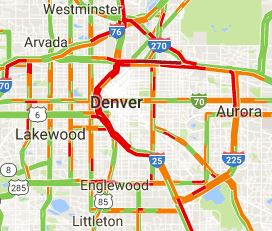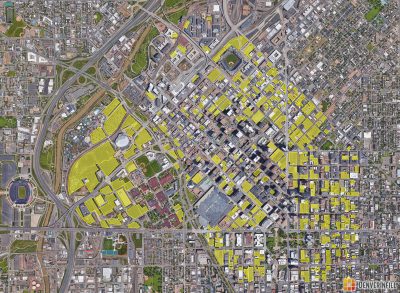Alana Miller
Policy Analyst
Denver is one of the fastest growing cities in the country and rapidly changing as a result. What this change looks like will largely depend on policy.
Policy Analyst
The street I live on is quintessentially charming, sitting next to a river and lined with historic brick buildings that were home to Denver’s once-bustling industry: an electricity plant to provide power for streetcars, a bottling company and a staple manufacturer. The picturesque buildings are home to a plethora of local businesses, including one of Denver’s oldest bars, My Brother’s Bar, which started as a saloon in 1880s.
But the neighborhood is rapidly changing. In the course of a few months, three of the old buildings on this little street, including the aforementioned staple factory, will have been torn down. A beloved bar was torn down last month to make way for a towering glass and steel office building. The grocery store is next on the cutting block, to be replaced by a parking garage. On a personal level, I hate it. I love Denver’s old Wild West charm, but I also recognize that change is happening and we need good policies in place to make sure that the change will be positive.
My story is a common one in Denver: I’m a millennial who moved there about a year ago after leaving New York City in search of a city that offered a more balanced lifestyle, access to the outdoors and more affordable prices. Denver is one of the fastest growing cities in the country, as tens of thousands of new residents flock there every year. These newcomers are increasingly young people: Denver is ranked 5th in the country for the number of millennials compared to the total population.
These numbers demand certain things. Perhaps most obviously – housing stock. While construction cranes dominate the skyline, Census data shows housing development is falling far behind demand and more and more families are left homeless because of rising housing costs.
Another necessity for handling this influx of new residents is a good transportation system. Congestion in parts of the Denver metro region is already some of the worst in the country, with rush hour looking something like this:

One thing is clear – the city needs to come up with innovative ways to handle population growth in a way that will be sustainable, in terms of the environment but also in terms of meeting the needs of its residents.
Change is often met with resistance. Recently, the Denver City Council instituted a moratorium on two planning policies that were likely a step in the right direction. One rule that’s now on hold allows developers to build on small lots in mixed-use areas without providing off-street parking. Take a look at downtown Denver’s current supply of surface parking (in green). That’s a lot of space – space that could otherwise be used for housing, public parks or stores. Instead of insisting that all housing come with ample parking and assuming all residents have a car, the city should be considering alternatives, like expanding transit, promoting ridesharing and making walking and biking safer.

The second moratorium keeps developers from building modern row homes with a narrow “garden court” in between buildings. This infill construction often replaces a single-family home with many units, creating denser neighborhoods. I understand that it’s hard to see the city change so dramatically, but with a rapidly growing population and changing demographics, we need to consider ways to make more sustainable communities that people want to and can afford to live in.
Change is uncomfortable and scary. I don’t know what my street will look like in a year and, in the meantime, I’m bracing myself for constant truck traffic, dust and noise. But what happens if we don’t consciously move towards a denser urban future with proper policies in place to make sure no one is being left behind? We can develop policies to ensure we’re creating more housing, or we can let developers turn neighborhood grocery stores into parking garages. The problems of the future cannot rely on solutions of the past: if we’re going to meet ambitious climate goals, address pressing housing and transportation needs, and create a livable city, we’ll have to do things differently.
Policy Analyst
